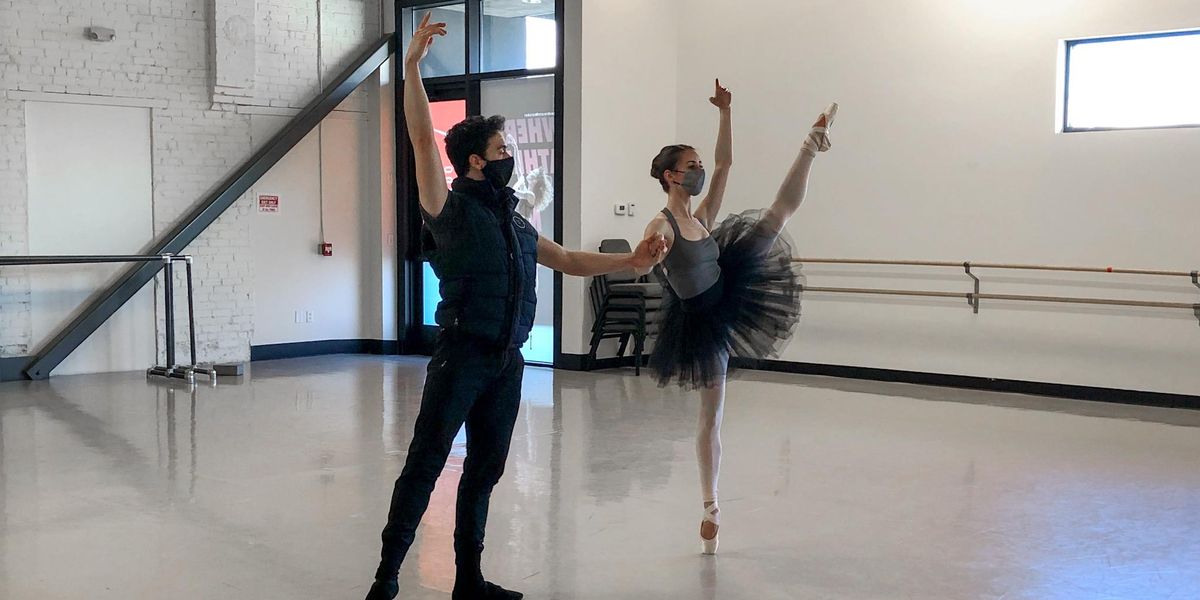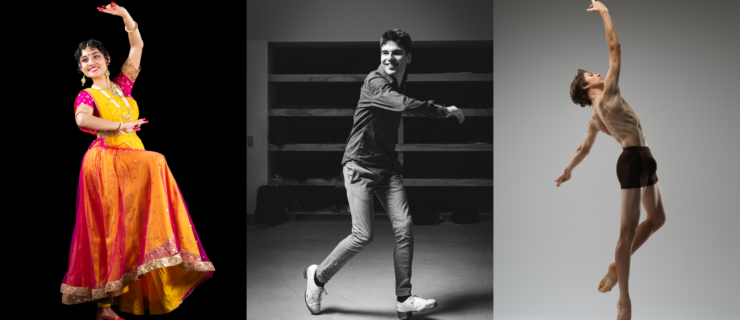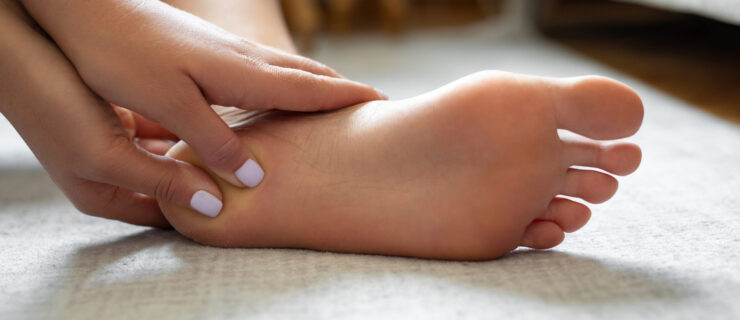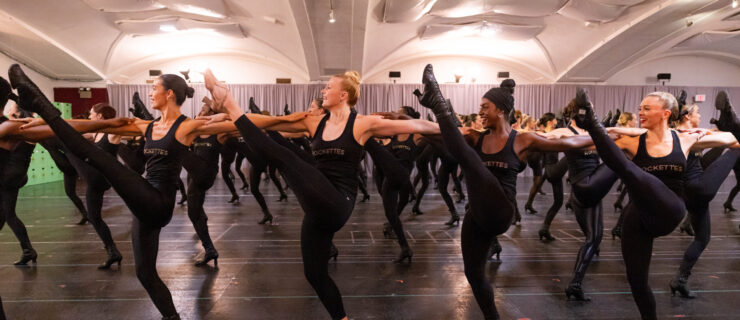How to Audition on Video: From Setting Up Your Space to Uploading Your Submission
It’s no surprise that auditions have gone virtual. Missed are the days of crowded hallways lined with dancers vying for room to warm up, anticipation and adrenaline in the air (along with those final spritzes of hair spray). Missed are the days of paper numbers filling a room to capacity—at least for now.
But Tiler Peck, a principal with New York City Ballet, sees a silver lining in this transition to video. “I can actually focus more on each person individually,” Peck explains from her experience reviewing video submissions for her upcoming summer intensive. “In a room, there might be one really great dancer in the back that you never even see just because of their positioning.” In a video, each dancer gets the same chance to be seen.
So how can you put together an audition video that’s sure to stand out? Dance Spirit spoke with Rickie “Typo” Crouch, an OG dance cinematographer known for the iconic Millennium Dance Complex videos, Gil Boggs, Colorado Ballet’s artistic director, and Peck to help walk you through—or should we say, dance you through?—the best ways to set up, shoot and submit your video auditions.
How should you set up your space?
With limited opportunity for onstage or even in-studio moments this past year, Peck and Boggs agree that footage shot from home is perfectly acceptable. “I’ve been using my kitchen counter for a barre for the past year,” Peck says, “and it does just the trick.”
Whatever the space, make sure your entire person can be seen on the video. This, Boggs explains, allows him to really see the extent of your technique. “As we’ve been teaching class on Zoom and people have been doing it from their homes, they can certainly do a relevé or an arabesque on video that will be very telling,” Boggs says. “It still gives a lot of information.”
You don’t have to have enough space to perform an entire class or variation in one go. “You can stop, back up, make room for yourself in the house, then do the next diagonal or the next section of the variation,” Boggs says. He adds that not everything has to be in one continuous shot: “Even if it’s choppy or cut up, it’s still an OK submission for me.”
Be sure to consider your surroundings. “Try to set up anywhere where you can get a depth of field, where we can see things in the background but don’t really pay attention to them,” Typo advises.
Create a space that’s neat, but not necessarily bare. “For example, if you stand outside and you dance in front of a tree and there are flowers behind you, nobody really pays attention to the trees and the flowers because they pay attention to you, but the scenery looks better,” Typo explains. “If you stand somewhere with just a white wall, parts where you might not be as strong in the dancing will stick out.”
But no matter what you’re working with, keep in mind that what really matters most is you.
“We’re not looking for the perfect setup,” Peck says. “We’re really just looking at the individual.”
How should you shoot your video?
Top-of-the-line camera equipment isn’t the only way to shoot a great video. In fact, Typo says an iPhone is more than enough for all your DIY-video needs.
Typo prefers filming with a 24mm–focal-length lens on his pro rig. But with 4K video and a wide-angle lens, any iPhone since the 7+ does a lot of the work for you. The trick is knowing how to use it.
Shoot in landscape mode from a low angle. “The lens level should be about where the knee is and then tilted up,” Typo says.
“I always set my class up that way, where the camera is just a little bit lower,” Peck says, referring to her #TurnItOutWithTiler classes on Instagram. “It makes your lines look better and your legs look longer.” Your moves and the space look bigger from this angle as well.
“The lighting source should always be behind the camera,” Typo says. This way, the iPhone can best auto-adjust the color, clarity and detail of the shot.
Whether the iPhone is on a tripod or a gimbal, or in the hands of your recruited videographer, the built-in stabilizer will ensure your shot is smooth, not shaky, and allow for greater freedom of movement. If you’re able to have someone behind the camera, Typo recommends finding ways to follow the movement in the shot—but don’t overdo it.
“I film with the music and the dancer versus just filming the dance,” Typo says. “Even your mom could do that—find times to walk forward and walk back—and that makes the video three times better.”
Your browser does not support the video tag.
Typo demonstrates how filming with the music and the dancer can change your entire video.
What should you include in your video?
Every video audition has different requirements for what to include. But Peck, Boggs and Typo all agree on one thing: Perform as if in person.
“You have to really look at the camera,” Peck says. “The person is going to be watching you from their computer or their TV, and you have to find a way to engage them without being in the same physical room as them.”
Typo says not looking at the camera is one of the worst things you can do. It disconnects you from the viewer. “If you’re going to film an audition and the audience is the camera, perform to the camera,” Typo says. “Always look where the audience is supposed to be.”
Boggs says your presentation and personality on video will show him how you will perform onstage.
Take comfort in knowing you have more than one chance to record. But don’t fixate on this added perk of being able to do things again and again. Peck says she sets a limit for herself on the number of takes she can do when dancing on video. “After that, you have to just move on because there’s never going to be a perfect take,” Peck says. “Perfection doesn’t exist.”
Don’t let video auditions discourage you; see them as an opportunity to make the most of your at-home training. “We need something to look forward to right now,” Peck says. “I think it’s really important for students to give themselves the opportunity to go out there and do it. I think if you don’t have these opportunities, it’s even more depressing.”
How should you edit your video?
Simple edits go a long way. Whether you use basic apps like iMovie or even TikTok, or more advanced software like Final Cut Pro or Premiere Pro, import your video footage, trim the best takes, and splice them together in the timeline.
Always overlay the audio. “You don’t want the wind blowing or cars driving by or dogs barking while you’re dancing,” Typo says. But this doesn’t mean you should film in silence. Import the soundtrack separately once you’ve cut and connected your footage. Stack the audio and video footage one on top of the other. Silence the audio from your video footage and match the stand-alone soundtrack to your movement.
If you need to submit a link, upload your final video to a hosting platform. “I personally think a YouTube link classified as unlisted is the best option,” Typo says.




